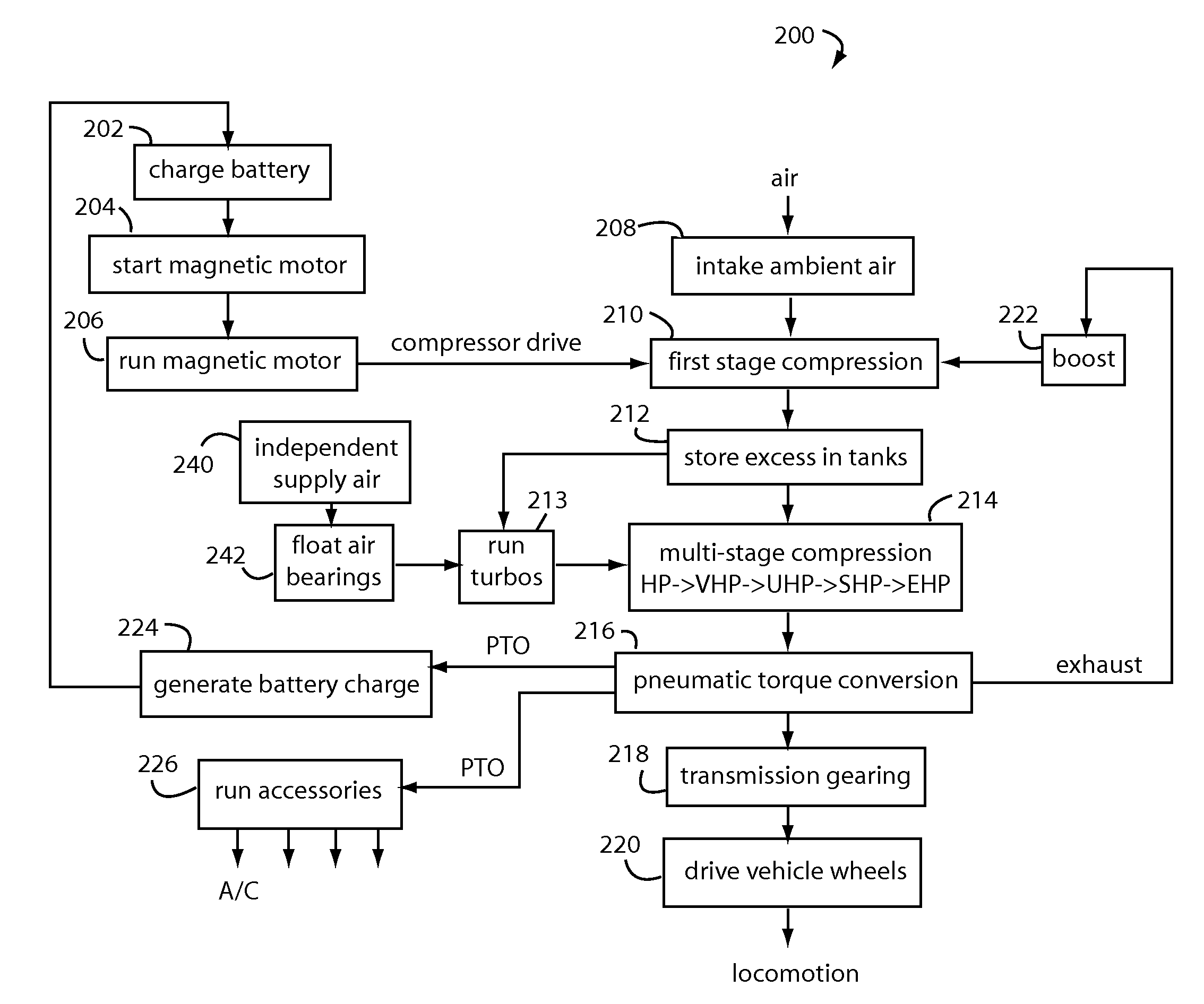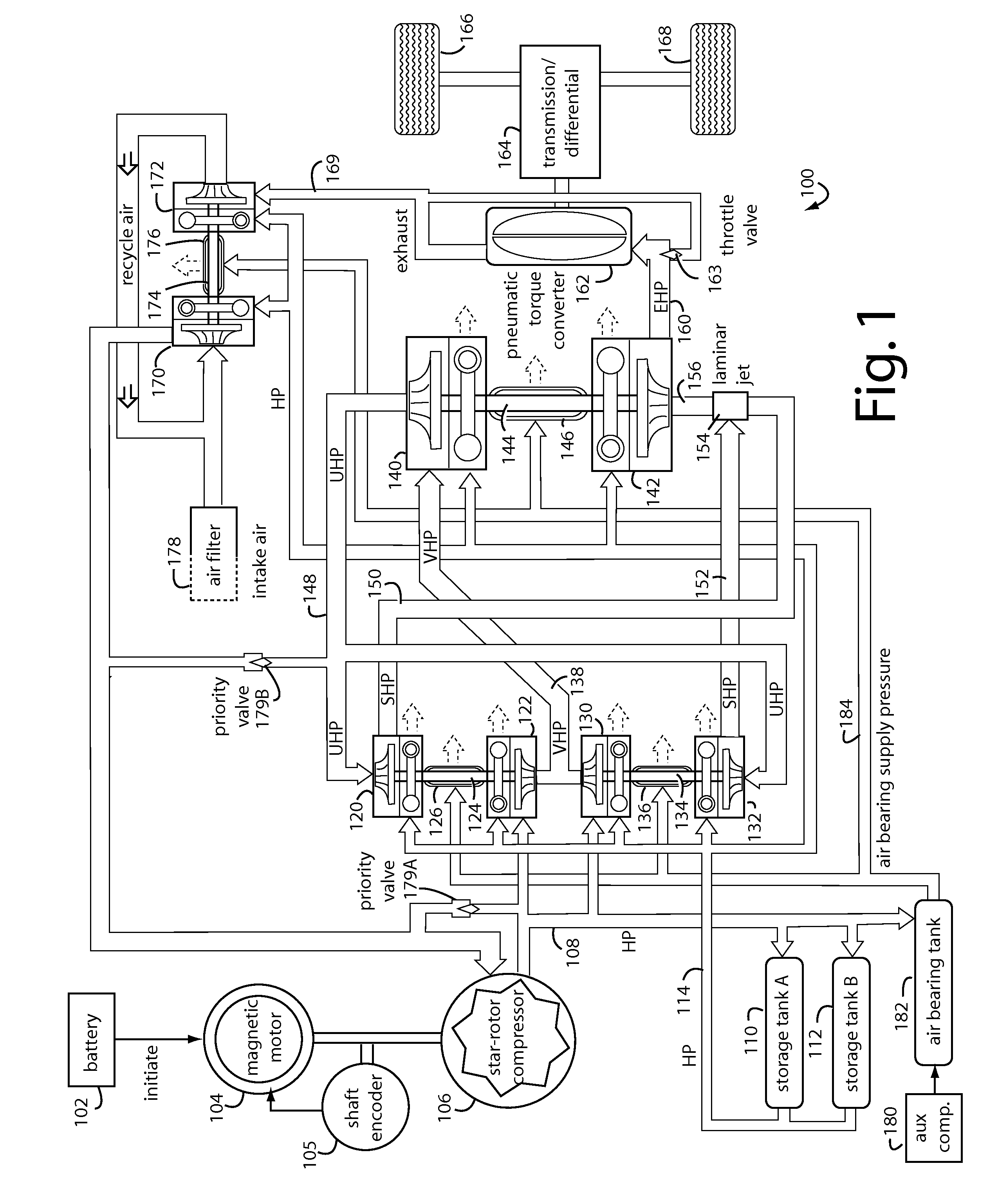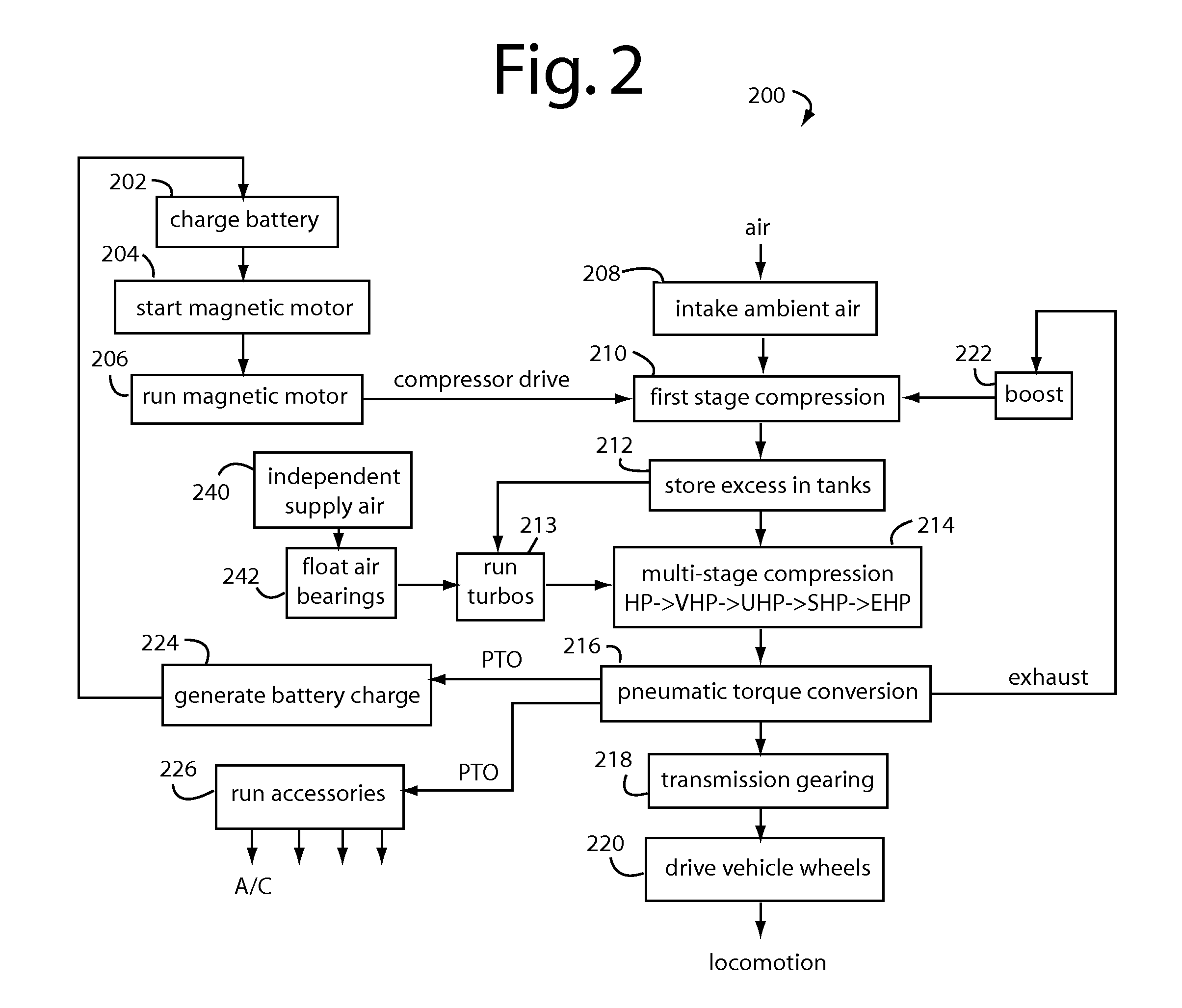Magnetic motor and automobile
a technology for automobiles and magnets, applied in the direction of motors/generators/converter stoppers, propulsion parts, etc., can solve the problems of wasting energy, reducing the range of these vehicles, and exceeding the high-pressure that has been necessary, so as to reduce the friction of shaft turning and ensure the effect of high rotational speed, safety and reliability
- Summary
- Abstract
- Description
- Claims
- Application Information
AI Technical Summary
Benefits of technology
Problems solved by technology
Method used
Image
Examples
Embodiment Construction
[0025]FIG. 1 represents a magnetic air car embodiment of the present invention, and is referred to herein by the general reference numeral 100. The magnetic air car 100 includes a 12-VDC storage battery 102 to start a magnetic motor 104 by energizing the windings of an internal starter motor. A shaft encoder 105 provides timing information back to the magnetic motor 104 for the proper synchronization of electric pulses to the stator windings.
[0026]The magnetic motor, once brought up to its starting speed, drives a star-rotor compressor 106. The star-rotor type compressors have rotors which are synchronized by gears not to touch one another during operation.
[0027]In one embodiment of the present invention, battery 102 includes a sodium free complex silicon salt electrolyte as described in PCT published patent application WO 01 / 13454 A1, published Feb. 22, 2001. Greensaver Technology Corporation (Ningbo, China) says they hold a patent for their so-called GREENSAVER BATTERY. Silicone B...
PUM
 Login to View More
Login to View More Abstract
Description
Claims
Application Information
 Login to View More
Login to View More - R&D
- Intellectual Property
- Life Sciences
- Materials
- Tech Scout
- Unparalleled Data Quality
- Higher Quality Content
- 60% Fewer Hallucinations
Browse by: Latest US Patents, China's latest patents, Technical Efficacy Thesaurus, Application Domain, Technology Topic, Popular Technical Reports.
© 2025 PatSnap. All rights reserved.Legal|Privacy policy|Modern Slavery Act Transparency Statement|Sitemap|About US| Contact US: help@patsnap.com



